Protecting the value and safety of your property starts with the roof above it. Roofing Services in Hammersmith and Fulham prevent leaks, damp, and unnecessary energy loss, safeguarding homes and businesses across London and the Home Counties, including Kent, Surrey, West Sussex, and Berkshire. Every job is executed with regulatory compliance, lasting performance, and meticulous care as the standard.
With decades of experience, Which Trusted Trader and CITB accreditations, and materials such as Welsh Slate, ALM Lead, and Kemper, our reputation is proof-backed.
Book a free survey today and protect your property.

Ignoring roof issues exposes your property to damp, insulation failure, and worsening structural problems. Every delay risks higher repair costs and amplifies long-term risk for every property owner.

Professional Roofing Services in Hammersmith and Fulham are the remedy—assuring weather protection, enhanced energy efficiency, and full compliance with building regulations. Whether you’re a homeowner seeking reassurance, a landlord invested in value retention, or a business requiring reliability and safety, strategic roofing work is a secure investment tailored to any property and need.
Our Roofing Services in Hammersmith and Fulham span installations, urgent repairs, upgrades, and detailed restorations for residential, commercial, and heritage properties. We prioritise long-term performance, regulatory compliance, and trusted materials—tailoring every solution to your property’s requirements and delivering every project with safe, meticulous care.
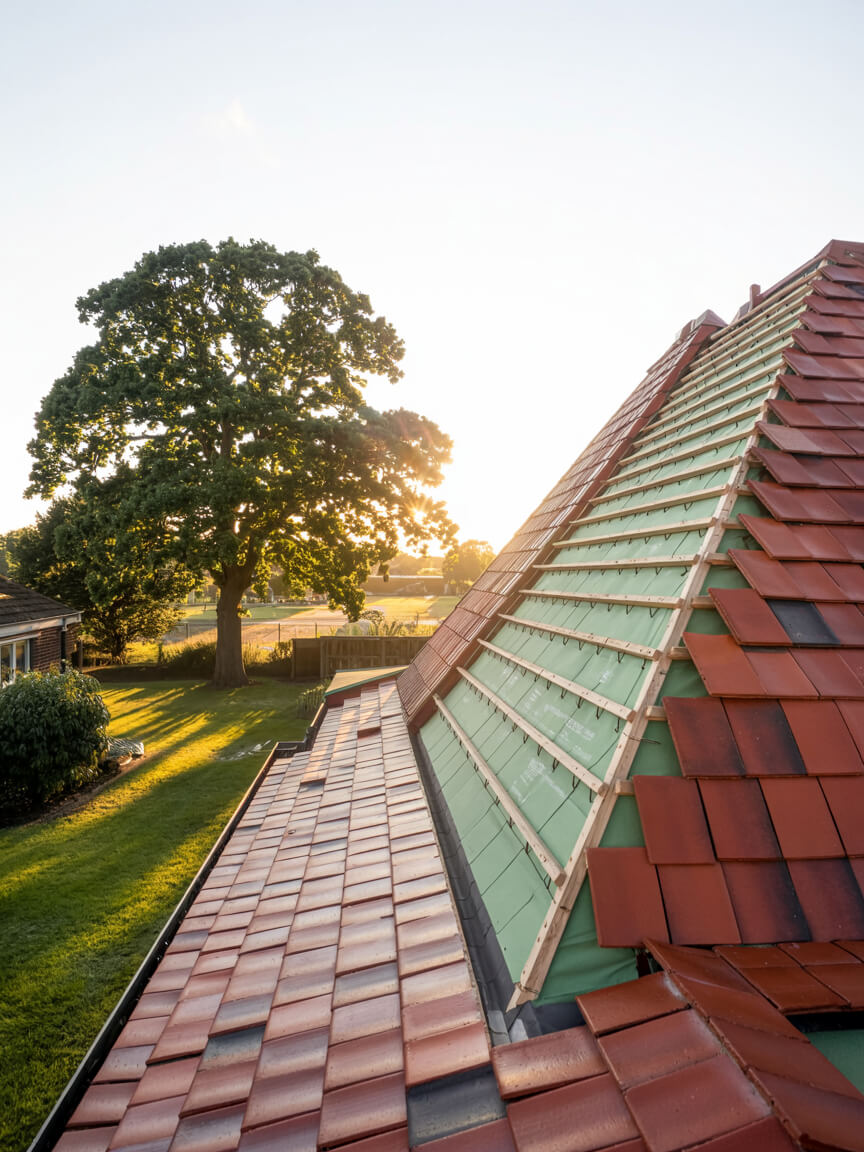
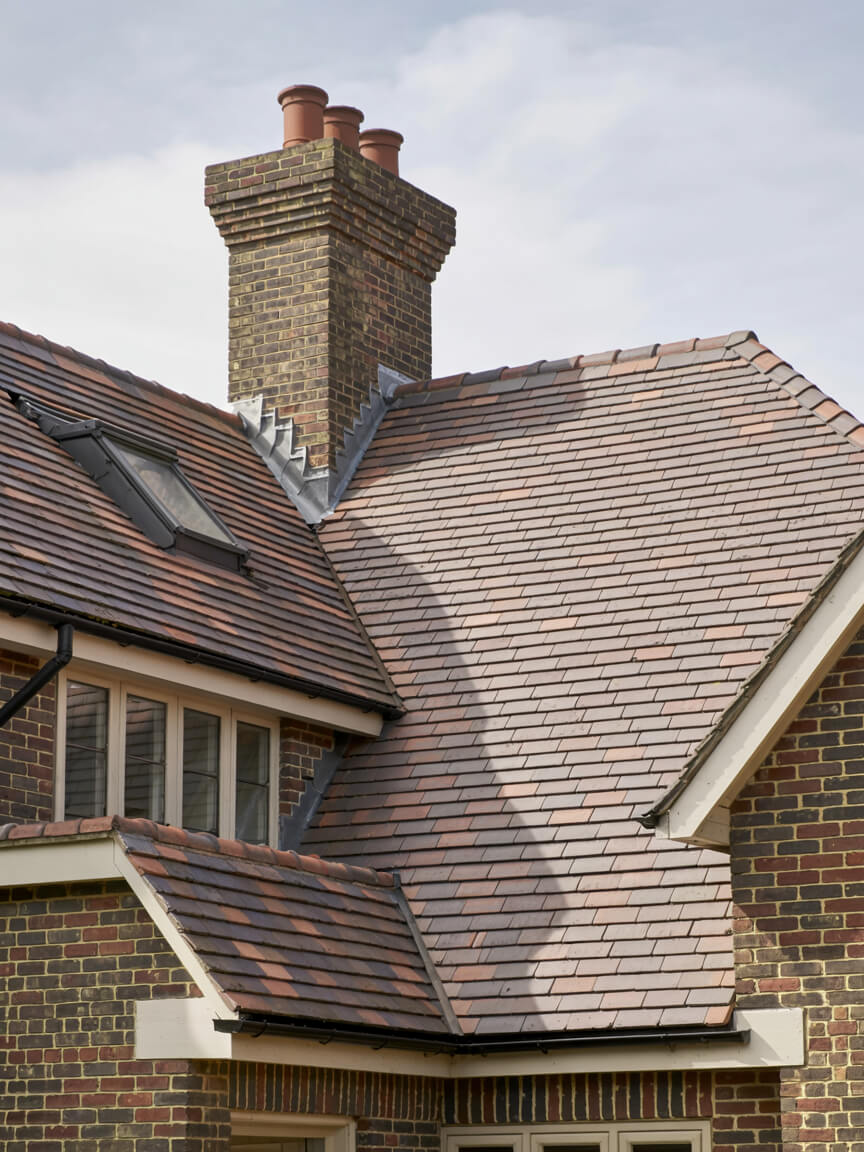
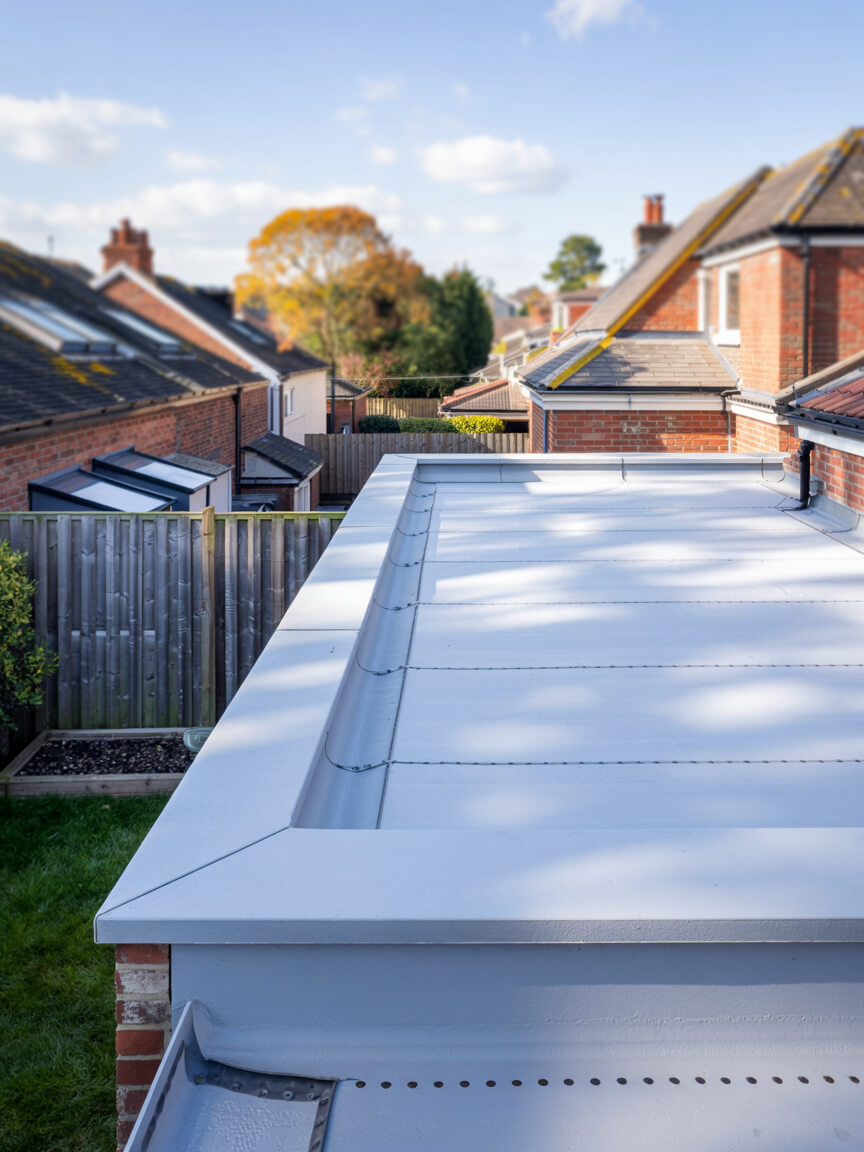
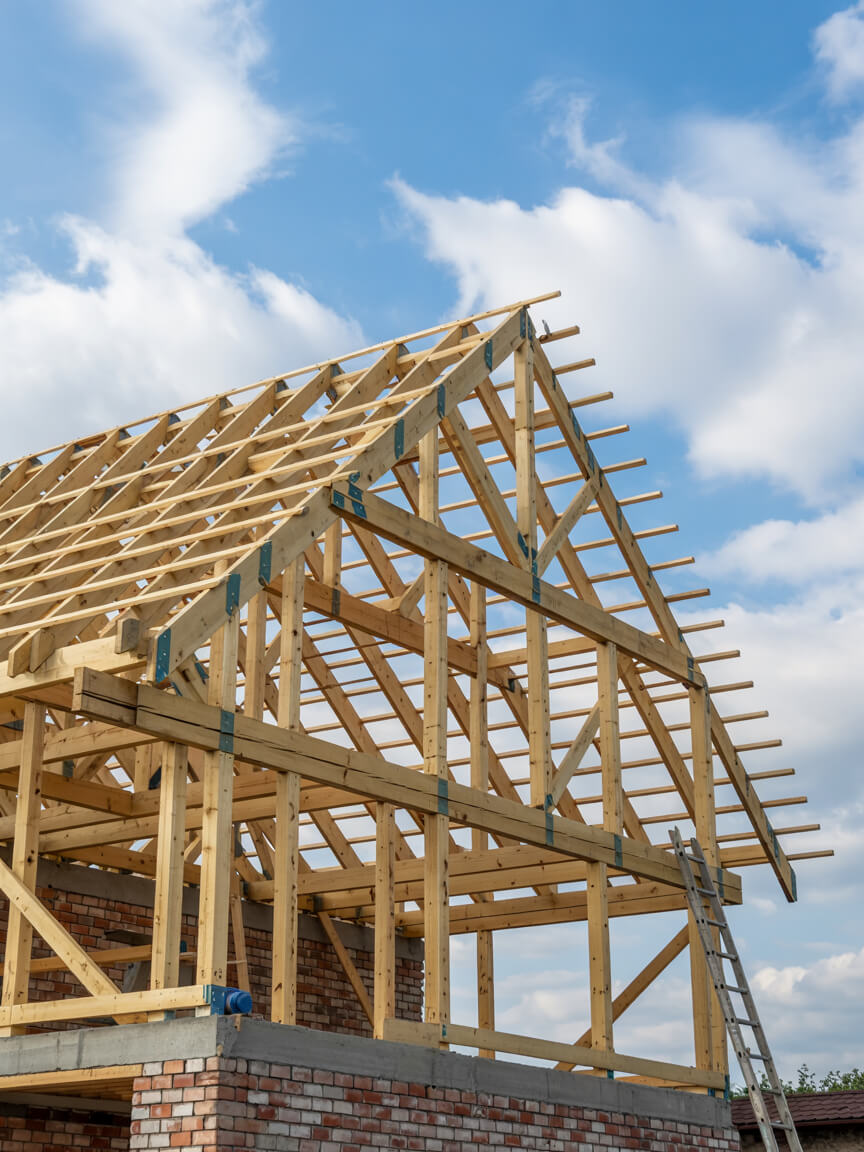
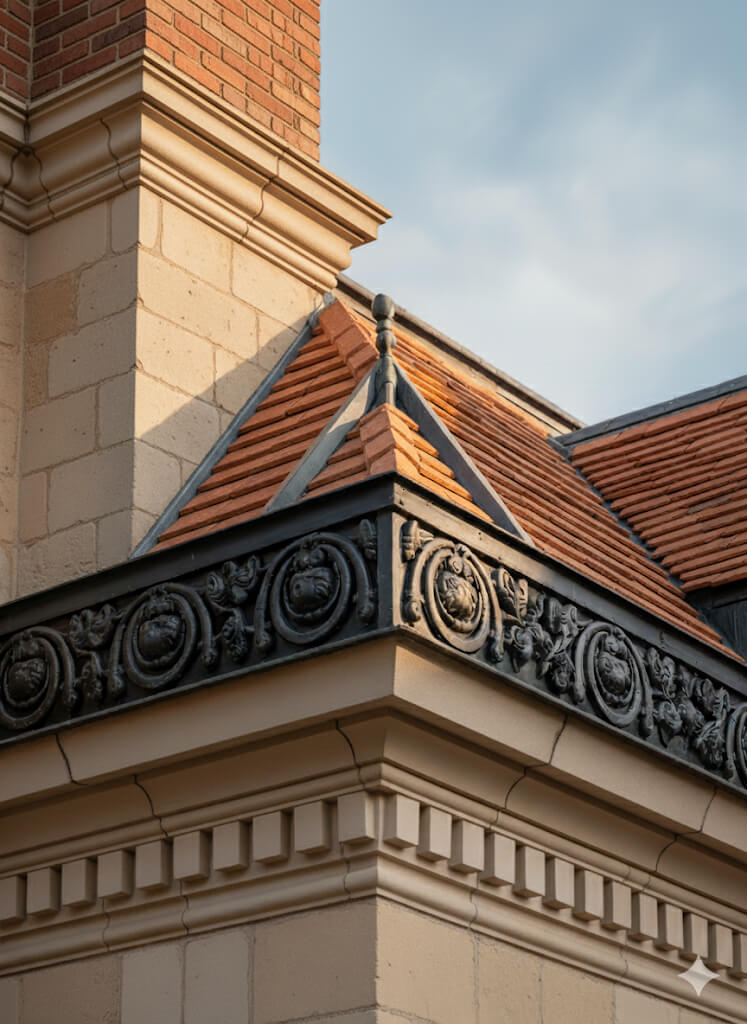
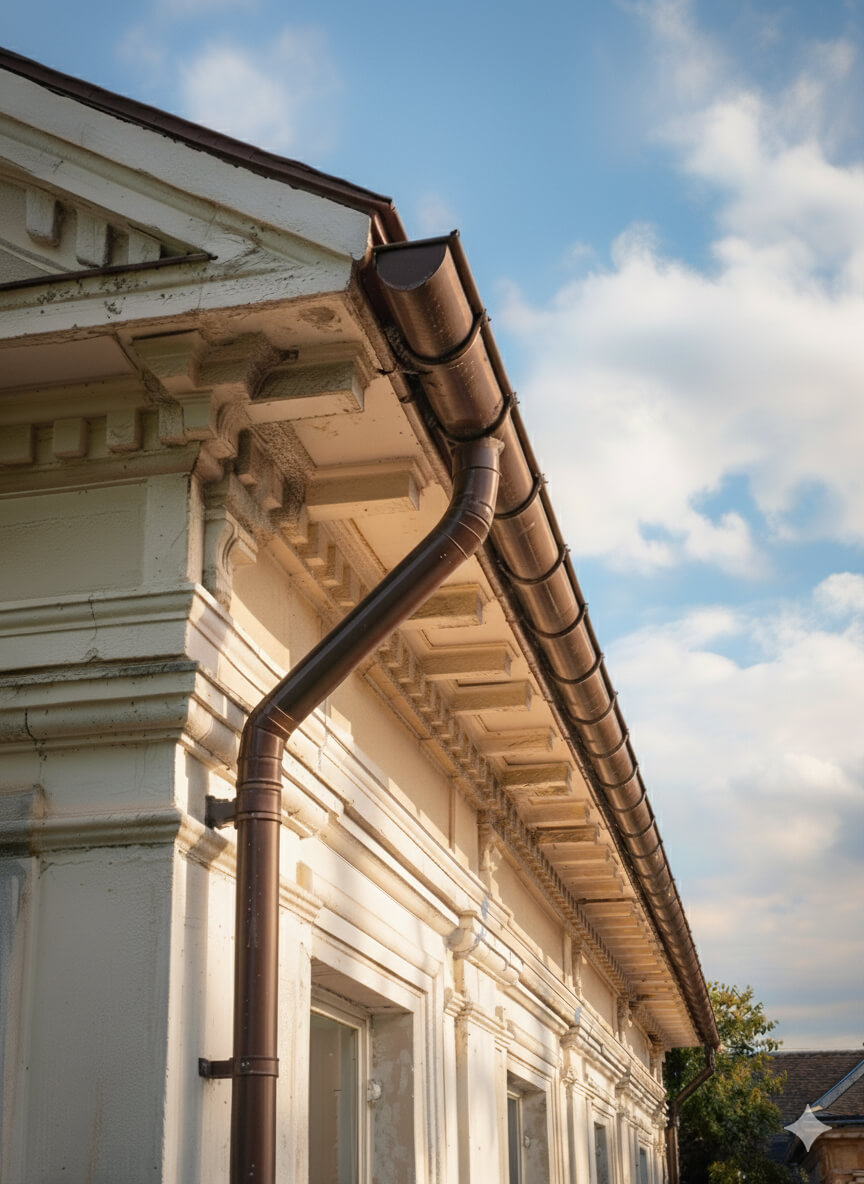

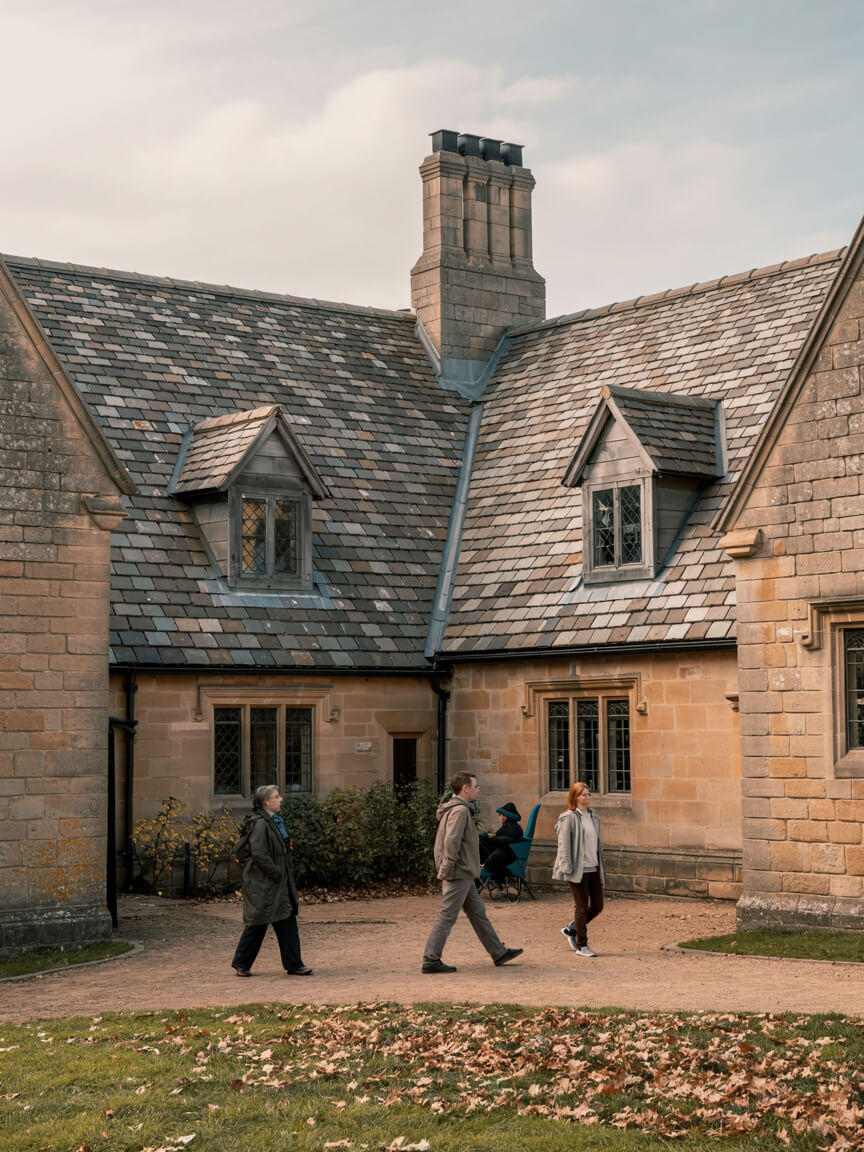
Every Roofing Services in Hammersmith and Fulham project is adapted to property type, roof structure, and environmental demands. Tailoring ensures compliance with regulations, minimises disruption, and maximises long-term value. From homes and businesses to industrial sites and listed heritage buildings, our flexible approach guarantees roofing solutions that meet unique needs while delivering safety, efficiency, and reliability.
Homes, extensions, and listed buildings.
Offices, retail, schools, and hospitality.
Warehouses, factories, and logistics sites.
Every Roofing Services in Hammersmith and Fulham project follows proven steps with quality materials. Whether a new installation, upgrade, or repair, each layer adds durability, safety, and efficiency—tailored to protect your property and meet regulatory standards.
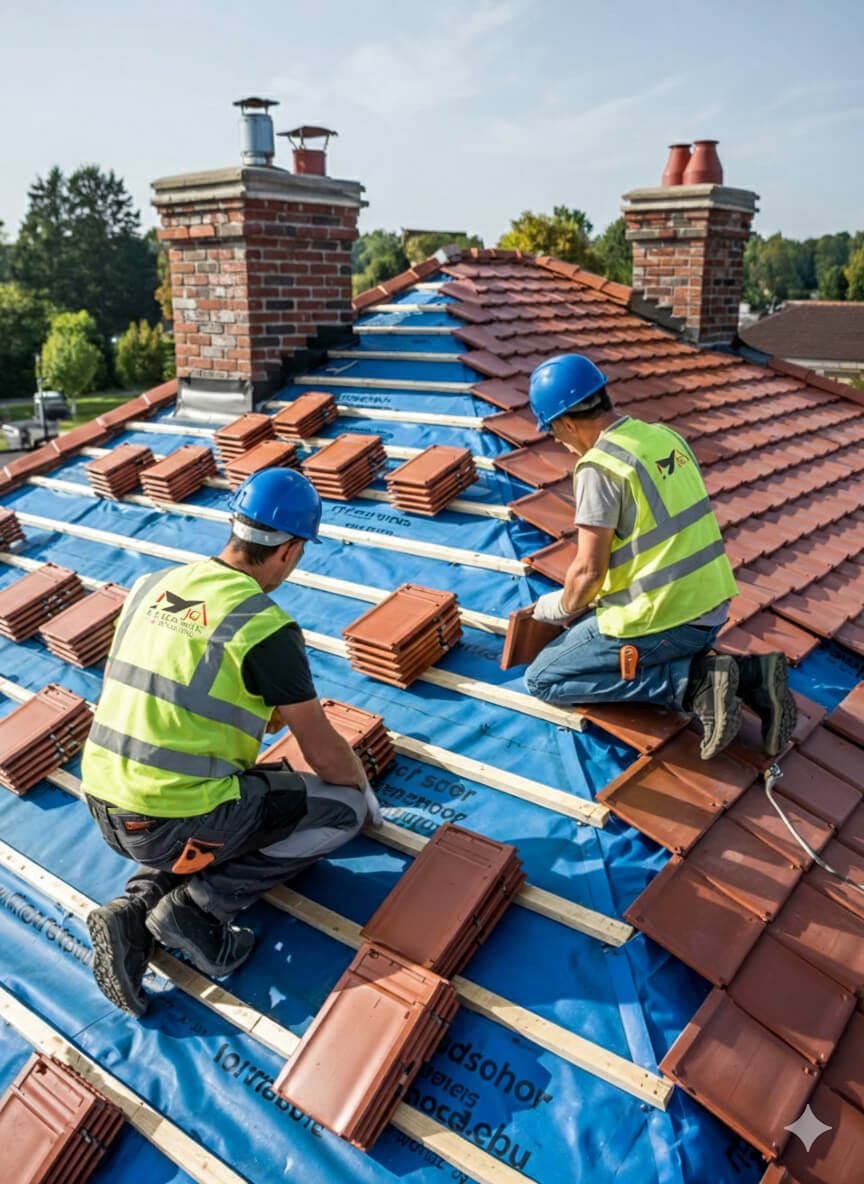
Get a free, no-obligation quote today.
Our experts are standing by to help you choose the perfect flat roofing solution.
⏱ Response within 24 hours guaranteed
Accredited by Which Trusted Trader, CITB, and approved by Kemper and Westwood, our team delivers safe, compliant, and warranty-protected Roofing Services in Hammersmith and Fulham projects. These credentials mean guaranteed standards and long-term assurance—reinforced by the positive client reviews that consistently highlight quality, professionalism, and trust.


Complete reroofing. Living in Singapore at the time and T was super responsive and communicative.
Replacement of lead box gutter and new flashing to parapet wall. I had an excellent experience using James and the team. He was very prompt in all aspects of communication and completed a first class job. Really pleased.
James completed some repairs on our roof and replaced some of our pebble dash by the roof as well. He was very thorough and fixed everything. He kept us really informed by taking photos and showing us what he did and keeping us updated. It also went onto our neighbours roof and he did the same fo...
We had a leak in our bedroom and James fixed the roof for us to stop it from leaking. All the work came with a warranty. The work that was carried out was good. James and his team were polite, and did all the work quickly and without too much interruption to our day-to-day lives. Would recommend ...
J G Leadworks have repaired and replaced the roofs and gulleys over our warehouse and workshops which have meant both areas are now watertight
James and team were incredibly responsive to my request to look at a serious leak issue on my flat roof. They did a very thorough investigation and explained in detail the issue and gave a fair quote. They were quick to book in and complete the work and have checked in afterwards a few times to m...
James was quick to respond to the initial contact and was able to work around some time constraints I had. He explained what needed doing clearly and was happy to answer follow up questions. He took pictures to show each stage and I feel confident in the work that was done by James and the team. ...
JG Roofing were very easy to work with. Their quote was sensible and they stuck to that figure. They completed many repairs to my roof including, rebuilding a leaded gutter, reinforcing rotten rafters, rebuilding a long felted gutter and felting parapet walls, resurfacing and felting a flat roof,...
Planning and legal checks protect clients from costly errors, delays, and non-compliance, ensuring roofing projects meet regulatory and safety requirements.
Permission is typically required for listed properties, conservation areas, or major roof alterations. All projects must also satisfy Building Regulations, including Part A (structural safety) and Part L (energy efficiency), ensuring compliant and future-proofed installations.
Our team manages the full process, from initial surveys to legal guidance, preparing documentation, and liaising with local authorities where needed. Whether working on modern homes or heritage sites, we ensure every project is delivered legally, safely, and with minimal disruption—providing complete reassurance and peace of mind to property owners.

Every project unites skilled workmanship with rigorously tested materials.
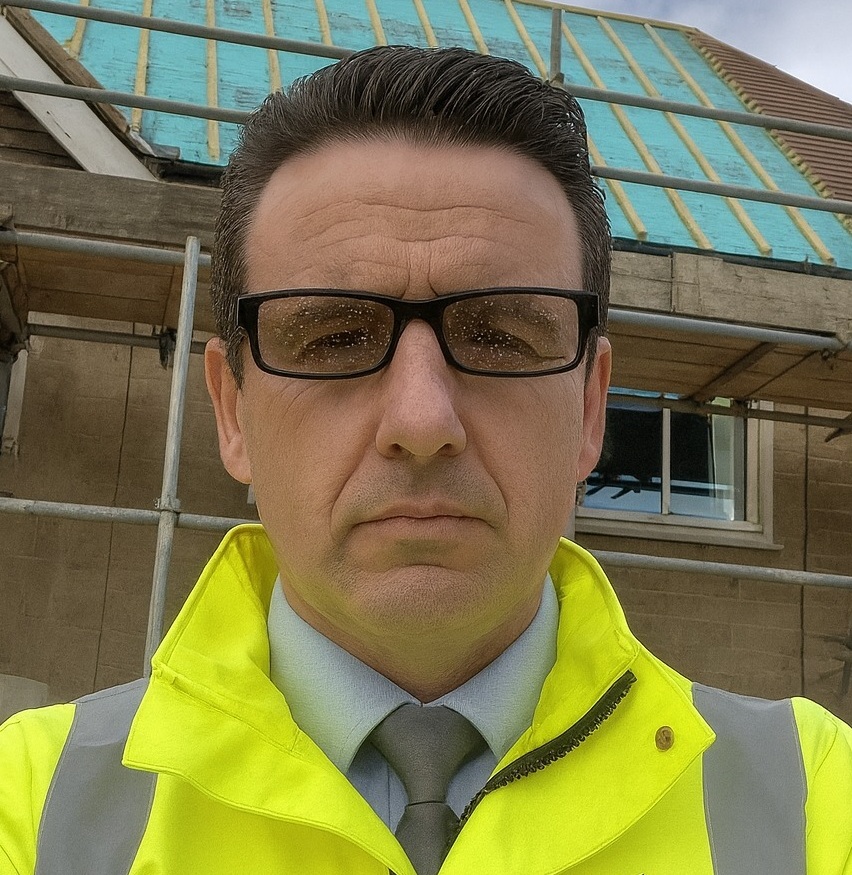
With 25 years of experience in lead sheet roofing, James is a trusted expert in heritage roofing, slate, and tiling. His knowledge of traditional methods, paired with modern compliance, makes him a go-to specialist for projects that demand both craftsmanship and durability.
Roofing Services in Hammersmith and Fulham provides lasting protection, efficiency, and value, delivering durable, compliant roofing solutions that safeguard every type of property investment.
Selecting Roofing Services in Hammersmith and Fulham involves balancing durability, budget, compliance, and aesthetics to secure the best-fit roofing solution for your property.
Why Clients Choose JG Leadwork and Roofing
With decades of trade experience, our teams understand the unique demands of London and Home Counties roofing. From heritage-listed properties to contemporary extensions, we adapt solutions to local regulations, weather conditions, and architectural styles with precision.
Accredited by Which Trusted Trader, CITB, and approved by Kemper, Westwood, IKO, ALM, and other leading suppliers.
These credentials guarantee safety, compliance, and access to manufacturer-backed warranties, giving clients peace of mind that their project meets the highest professional standards and benefits from warranty protection.
Our heritage projects use Welsh Slate and handmade clay tiles for authenticity, while leadwork is delivered to Lead Sheet Association (LSA) standards. Commercial installations employ Kemper and Westwood liquid systems for durability and efficiency. Each example demonstrates our reliability, blending traditional craftsmanship with modern performance.
Our workforce includes skilled roofers, heritage specialists, and safety-certified installers.
Every roofer holds NVQs, receives ongoing CPD training, and is qualified in both modern flat systems and traditional techniques, including slate and leadwork.
Team structure ensures projects run smoothly—surveyors identify needs, installers deliver with precision, and supervisors oversee compliance. This approach minimises disruption, accelerates timelines, and guarantees consistent quality across residential, commercial, and industrial roofing projects.
Every project is regulation-compliant, warranty-backed, and focused on long-term results.
Client testimonials and case studies confirm our track record, with projects praised for professionalism, durability, and customer support.
We go beyond installation with aftercare packages, maintenance support, and open communication at every stage. Property owners gain reassurance that JG Leadwork and Roofing stands behind its work. Book a free survey today and discover why homeowners, landlords, and businesses trust us with their roofing.

Get a free quote, rapid response, and expert service across London and the Home Counties. Contacting JG Leadwork and Roofing is your simple first step to dependable roofing solutions.
We source materials from leading suppliers including Supreme and IKO felt systems, Kemper, Westwood and Proteus liquid systems, Welsh Slate, handmade clay tiles, ALM Lead Mills, and Nicholson Air Track. These trusted brands guarantee durability, compliance, and warranty-backed performance across flat, pitched, heritage, and commercial roofing projects.
.
.
For homes, Roofing Services in Hammersmith and Fulham safeguards comfort and enhances kerb appeal with durable, energy-efficient systems. Whether modern extensions or traditional pitched roofs, tailored solutions improve living standards and protect property value.
For businesses, Roofing Services in Hammersmith and Fulham delivers cost-effective, large-scale installations with minimal disruption. Projects are planned around operations, with safety compliance, energy performance, and flexible scheduling built in—supporting offices, retail, schools, and industrial facilities with reliable, regulation-ready outcomes.
For heritage properties, Roofing Services in Hammersmith and Fulham combines authentic materials such as Welsh slate, handmade clay tiles, and ALM lead with skilled conservation techniques. Listed building consent and conservation requirements are fully managed, ensuring traditional character is preserved while integrating modern weatherproofing. This careful balance provides long-term durability without compromising historic integrity or aesthetic value.
JG Leadwork and Roofing delivers Roofing Services in Hammersmith and Fulham across housing, commercial, heritage, and public sectors. Every industry comes with unique requirements, from safety and compliance to efficiency and conservation. Our adaptability ensures projects are delivered with precision and professionalism—whether safeguarding homes, supporting business continuity, preserving history, or protecting critical public and healthcare facilities.
Durable roofing installed with minimal disruption, ensuring safe, regulation-compliant workspaces for staff and visitors.
High-standard, compliance-focused solutions protect community facilities while meeting strict safety and regulatory obligations.
Heavy-duty roofing tailored for wide spans, ventilation, and long-term maintenance efficiency.
Authentic materials and sensitive methods preserve historic character while adding modern protection.
Weatherproof systems that enhance kerb appeal and guarantee uninterrupted trading for outlets.
Tailored roofing improves guest comfort, safety, and ambience across hotels, restaurants, and venues.
Safe, durable systems designed for schools and universities with minimal learning disruption.
Specialist roofing solutions built for hygiene, safety, and regulatory compliance in medical environments.
Our team of NVQ-qualified roofers, LSTA-trained specialists, and health & safety-compliant professionals bring decades of combined experience. Every project is delivered with meticulous attention to detail, ensuring safe practices and consistent quality across flat, pitched, heritage, and commercial roofing disciplines.
Expertise includes heritage leadwork, slate and tile roofing, modern flat systems, and drone-assisted roof surveys. Ongoing CPD training ensures adaptability to both traditional craftsmanship and the latest innovations—giving clients confidence that every roof is built or repaired with proven skill and care.

A thorough survey highlights existing issues, structural considerations, and upgrade opportunities, ensuring the best-fit solution is identified from the very beginning.
Transparent, itemised quotes detail costs, timelines, and materials—giving you complete clarity and confidence before work starts, with no hidden surprises.
Scaffolding, access solutions, and robust safety measures are put in place to safeguard both property and people throughout the project.
Skilled roofers complete the work using accredited materials and proven techniques, delivering durable, compliant results while keeping disruption to a minimum—whether for repairs, replacements, or new installations.
Each stage is inspected against manufacturer standards and Building Regulations, with photographic documentation provided for transparency and peace of mind.
Each stage is inspected against manufacturer standards and Building Regulations, with photographic documentation provided for transparency and peace of mind.
In a competitive roofing market, many providers look the same on paper. JG Leadwork and Roofing stands out through proven expertise, accredited methods, and specialist techniques. Our combination of traditional craftsmanship and modern technology makes us the safer, smarter choice across residential, commercial, industrial, and heritage projects.
In a competitive roofing market, many providers look the same on paper. JG Leadwork and Roofing stands out through proven expertise, accredited methods, and specialist techniques. Our combination of traditional craftsmanship and modern technology makes us the safer, smarter choice across residential, commercial, industrial, and heritage projects.

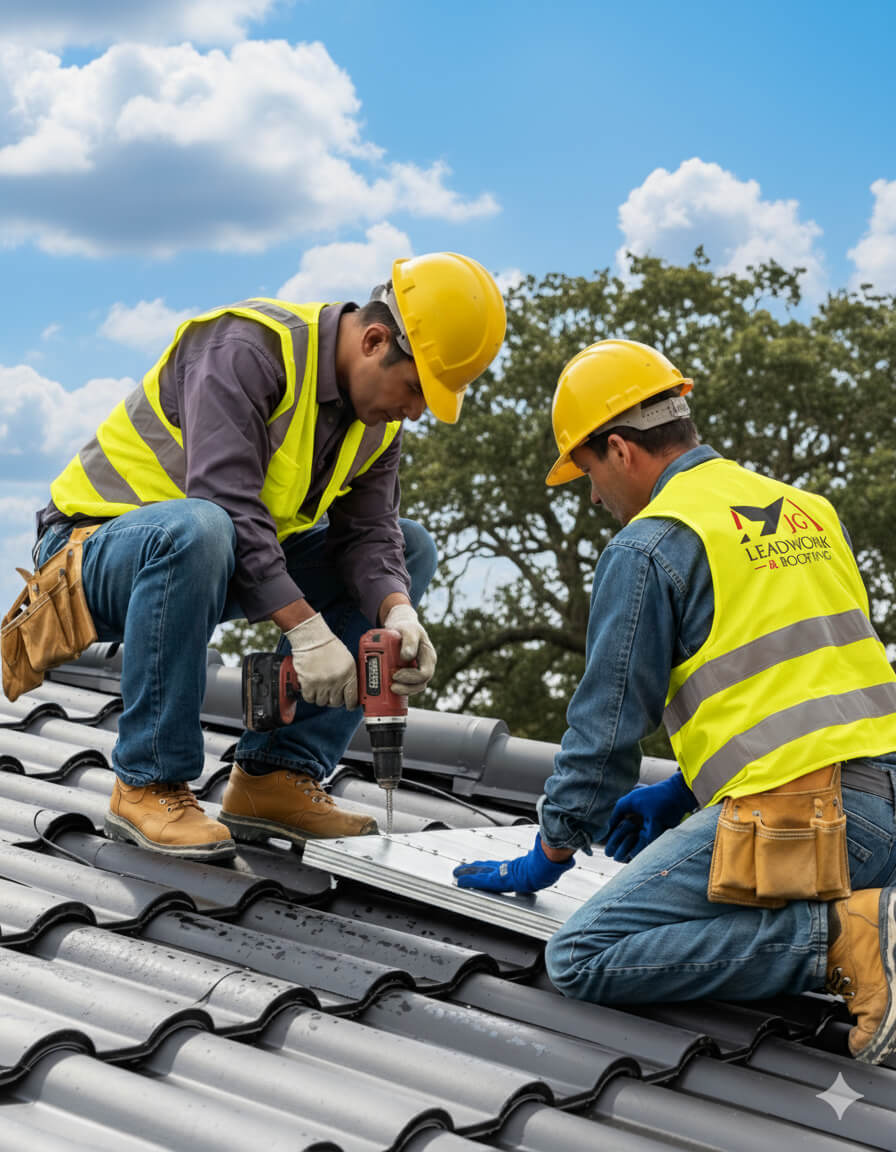
At JG Leadwork and Roofing, every project follows a structured QA process. Each stage—materials, installation, safety, and final sign-off—is measured against manufacturer specifications and UK Building Regulations to ensure durability, compliance, and warranty-backed performance across all roofing services.
Projects are only signed off once all QA checks are complete, giving clients confidence in long-term performance, structural safety, and insurance-backed peace of mind.
Every Roofing Services in Hammersmith and Fulham project by JG Leadwork and Roofing is delivered in strict alignment with UK Building Regulations and recognised frameworks. This ensures structural safety, energy efficiency, durability, and protects warranties and insurance coverage across residential, commercial, industrial, and heritage properties.
Clients can be confident their project is completed legally, safely, and insurance-ready—delivering long-term performance, compliance assurance, and complete peace of mind.
Property owners often wonder about Roofing Services in Hammersmith and Fulham—from costs and timescales to permissions. Below, you’ll find straightforward, trustworthy answers to the most frequent and practical queries.
Heavy rain frequently exposes weaknesses in a roof that remain hidden during drier spells. In Hammersmith and Fulham, leaks after storms or prolonged rainfall are often caused by a combination of age-related wear, poor detailing, and environmental factors. For property owners and managers, these leaks can result in interior water damage, structural decay, health hazards from mould, and even affect insurance claims. Understanding the precise root cause is essential to prevent repeated repairs, protect interiors, and maintain the roof’s long-term value. Below, you’ll find the most common technical mechanisms and how to spot them.
One of the leading causes of leaks, especially on flat roofs, is membrane deterioration. Roofing membranes—sheets of material forming a watertight seal—can degrade over time due to ultraviolet (UV) exposure, freeze–thaw cycles, and general ageing. Seams (where sheets join) are particularly vulnerable: adhesive bonds weaken, thermal expansion and contraction open up gaps, and “cold joints” form if installation is rushed in poor weather. Once gaps appear, heavy rain exploits these weaknesses. Water travels laterally inside the system (capillary action, meaning water’s ability to move through small gaps against gravity), so the point of leak inside may not align exactly with the entry. Symptoms include peeled corners, localised ponding, and visible cracks at joints. Risks are high: once water breaches the membrane, insulation soaks up moisture, increasing the risk of timber rot within the structure and even hidden electrical faults below. Older felt, mastic asphalt, or poorly maintained single-ply membranes are most susceptible, with lifespans varying—felt usually 10-15 years, single-ply commonly 15-25 years depending on quality and upkeep.
Flashing are strips of metal (often lead or coated steel), plastic, or rubber that seal roof edges, junctions with walls, around chimneys, and rooflight perimeters. When these fail—because of age, incorrect installation, or thermal movement—rainwater finds an easy path inward. Look for signs such as water stains at ceiling edges, damp patches near chimney breasts, or cracks in render abutting the flashing. Brittle or warped flashing, or visible gaps at junctions, are strong indicators. The risk isn’t confined to leaks; over time, failed flashing can cause mortar joints to wash out, bricks to saturate, and—if left unchecked—freeze–thaw cycles can cause masonry to crack or spall. With heritage or period properties in Hammersmith and Fulham, traditional detailing is often critical for both compliance and long-term performance.
Local environmental forces and inadequate roof design both contribute significantly to leaks after heavy rain. Standing water, also known as “ponding,” occurs where flat roofs don’t have adequate “fall” (slope). UK guidelines recommend a fall of at least 1:80, but building settlement or poor construction can result in water pooling for days. As water lingers, it increases membrane wear—many materials are rated to withstand only limited standing water (often less than 24 hours per rain event). Blocked outlets due to leaves or debris worsen the problem. Thermal movement—expansion and contraction with temperature swings—places stress on materials and joints, especially on long, uninterrupted roof runs. Meanwhile, inadequate ventilation or insulation leads to interstitial condensation, where warm, moist air from inside condenses within the roof structure during cold spells (referenced in Part L of UK Building Regulations). Persistent moisture shortens roof life and increases rot risk.
Thorough diagnosis starts with a careful visual inspection—checking for staining, peeling, or visible damage outside and indoors. Moisture metres help identify hidden damp within timbers or insulation, while borescopes (flexible cameras) allow professionals to see inside roof cavities with minimal disruption. Drone surveys are increasingly used for hard-to-access or large commercial roofs, providing high-resolution images of surface defects and ponding patterns. Flat roof systems sometimes require a core sample—removing a small section of the roof to examine membrane layers and underlying moisture.
Main Cause | Typical Symptom | Risk if Ignored | Indicative Remedy
:—————|:————————–|:————————-|:———————-
Failed Membrane | Bubbling, cracks, ponding | Damp, rot, insulation loss| Remove & repair/patch
Flashing Fault | Stains at edges, gaps | Masonry damage, leaks | Reseal/replace flashing
Ponding Water | Visible pooled water | Surface breakdown, leaks | Improve falls, clear outlets
Staying vigilant to these signs—and investing in periodic inspection—reduces the risk of water ingress, structural damage, and hefty repair bills in a region known for unpredictable weather and ageing building stock.
The cost of a new slate roof compared to a tiled roof in London is shaped by technical requirements, regulatory standards, and property-specific factors. Both materials are popular across Hammersmith and Fulham—especially on residential and heritage buildings—but each brings very different implications for price, compliance, and long-term value. Knowing what lies behind the numbers is essential for budgeting accurately and avoiding pitfalls when planning or upgrading your roof.
Material performance standards, local planning demands, and strict energy efficiency regulations all play a role in project costs. Below, you’ll find the core decision factors that explain why slate and tile budgets can diverge—plus a side-by-side framework to help property owners, developers, and project managers make a confident, regulation-ready choice.
Slate roofing generally carries a higher price tag than tile because of the raw material’s cost and the technical skill needed for installation. Natural slate must be individually cut, holed, and fixed with corrosion-resistant nails on site. Each piece is heavier and more brittle than standard clay or concrete tiles, which adds to labour hours and waste allowance. Workmanship is closely regulated under BS 5534:2014 (the British Standard for slating and tiling), requiring careful fixing to resist wind uplift and ensure structural stability.
Tile systems (concrete or clay) use machine-moulded, interlocking profiles that are lighter, quicker to fit, and simpler for most roofers to instal. Labour accounts for a smaller percentage of a tile roof’s cost, and there’s a broader pool of qualified contractors. However, both slates and tiles must meet the underlay and mechanical fixing standards set by BS 5534.
Your chosen material has direct compliance implications. In conservation areas or on listed buildings, planning officers may require authentic natural slate or “like-for-like” replacement, even if tiles are less expensive. Under Part A of UK Building Regulations, any covering must not exceed the supporting structure’s load-bearing capacity, while Part L increases costs through mandatory insulation upgrades; Part L requires your roof system to achieve a specific U-value—that is, a maximum allowable rate of heat loss through the structure.
Concrete tiles typically cost less per m² than slate but must achieve the same performance criteria for insulation and structural safety. Manufacturer instructions, local authority planning permissions, and minimum pitch regulations all govern your legal choices—and may limit cost-saving options, particularly on heritage projects.
Roofing prices in London run higher than the UK average due to a shortage of skilled labour and higher demand for specialist materials. Access constraints in dense boroughs, the complexity of roof geometry (dormers, hips, valleys), and the presence of additional features (chimneys or roof windows) can further increase both slate and tile costs.
Weather exposure is another consideration—roofs more exposed to wind or rain may require upgraded fixings or underlay, particularly with slate, which is heavier and more vulnerable to wind uplift if not secured properly. Conservation area policies or listed status may dictate materials for visible elevations, limiting choices or requiring specific grades of slate, which are costlier and sometimes need to be sourced from approved quarries.
A structured comparison helps clarify not just headline costs, but also lifecycle, compliance, and planning variables. For a typical London reroof, you might see the following:
| Factor | Slate Roofing | Tile Roofing | Reason for Cost Difference |
|---|---|---|---|
| Material (per m²) | £50–£70 | £20–£35 | Slate mined, heavier, more expensive to source |
| Labour (per m²) | £45–£60 | £25–£40 | Slate fitting is slower, needs specialists |
| Life Expectancy | 80–120 years | 30–60 years | Slate lasts longer, reduces long-term upkeep |
| Planning/Conservation | Often compulsory | More flexibility | Heritage rules favour natural slate |
| Insulation Compliance | Required | Required | Same under Part L—U-value must be achieved |
| Fixing Complexity | Each slate individually set | Interlocking, easier fitting | Labour/time per m² differs (BS 5534 applies) |
The right choice depends on balancing initial outlay, regulatory demands, long-term durability, and the requirements of your property’s status. Getting it wrong can mean not only higher repair bills later—but also failed inspections or mandatory costly alterations to meet UK building or conservation standards.
Roof installation in Hammersmith and Fulham typically ranges from just a few days to two weeks, depending on factors such as the size of your property, roof type, access restrictions, weather conditions, and the complexity of the work. For most terraced or semi-detached homes with pitched roofs, a standard replacement is usually completed within 3–7 working days. Projects involving flat roofs or heritage properties can take longer, especially if they require specialist materials or traditional restoration techniques. Understanding these typical timeframes enables homeowners, landlords, and facilities managers to plan for costs, minimise disruption, and meet essential safety considerations.
Many property owners are surprised to learn that a roof installation isn’t only about laying down new tiles or membranes. The process includes erecting scaffolding, stripping old coverings, carrying out timber or deck repairs, installing weatherproofing layers and insulation, and finishing with details such as flashing and chimney work. Unplanned structural repairs or bad weather are the most common causes of delays, so a clear timeline helps safeguard both your property and everyone who uses it.
The time needed for a roof installation depends on the system and property:
These estimates assume stable weather and that no serious defects are discovered. If hidden problems are found during the work—such as rotten timbers—several extra days may be necessary for repairs.
The characteristics of your property and local environmental conditions play a significant role in how long your roof project will take. Larger roofs, complicated layouts, and details such as dormer windows, valleys, or multiple elevations require more labour and scaffolding, increasing the timeline. Limited site access—common in urban areas—can slow both setup and material transport.
UK weather is a key influence. Frequent rain and wind, particularly in the winter, can stop work or require extra measures like temporary coverings. Many adhesives and mortars need dry, moderate weather to set safely. As a rule, spring to early autumn is the busiest and most reliable period for outdoor roof work. Winter projects often require extra contingency days for poor weather, especially when using materials like lime mortar that are sensitive to freezing.
For heritage buildings or flats, you may need advance permissions or specialist contractors, both of which can add weeks to the planning and execution process.
Regular inspections and maintenance are essential to safeguard your roof investment and the safety of building occupants. For most pitched roofs, an inspection at least once every 3 to 5 years is recommended—or immediately after major storms. If your property is surrounded by trees, schedule yearly gutter and downpipe cleaning to prevent blockages. Flat roofs should be checked every two years, with extra attention after extreme weather for signs of ponding, membrane splits, or movement.
Routine care includes:
Staying proactive—especially about drainage and after storms—helps avoid larger, more expensive problems down the line.
| Material | Typical Lifespan | Inspection Frequency | Maintenance Needs |
|---|---|---|---|
| **Slate** | 80–100 years | Every 5 years | Minimal; replace slipped or broken slates |
| **Clay Tile** | 60–80 years | Every 3–5 years | Replace cracked tiles, clear moss |
| **Concrete** | 40–60 years | Every 3 years | Replace damaged tiles, check flashings |
| **Felt** | 10–20 years | Every 2 years | Seal edges, patch splits promptly |
| **EPDM/Liquid** | 25–40 years | Every 3 years | Inspect joints and outlets; recoat if required |
Carrying out routine checks and prompt repairs—such as sealing minor splits or securing slipped slates—can significantly extend your roof’s life and reduce the need for major interventions. In areas like Hammersmith and Fulham, where the climate brings heavy rain and freeze–thaw cycles, regular attention is key to sustaining long-term performance.
When dealing with roof issues in Hammersmith and Fulham, two questions arise for homeowners and property investors: What will I actually pay for repairs versus a new roof, and how can I avoid costly mistakes or rejected insurance claims in the future? The answer goes beyond headline prices. Real protection comes from understanding the full cost structure, the value of insurance-backed warranties, and the critical role of working with an accredited installer. These factors not only affect immediate expenses, but also shape long-term risk, compliance, and resale value.
The gap between a routine repair and a full roof replacement is considerable, and understanding what determines those figures is essential.
| Service Type | Typical Range (UK) | Key Influences |
|---|---|---|
| Roof Repair | £250 – £1,200 | Damage type, access, materials |
| Roof Replacement | £5,000 – £15,000+ | Size, structure, insulation, finish |
Roof repair costs depend on the nature of the damage (e.g., slipped tiles or leaking flashing), accessibility (scaffolding vs. ladder work), and the materials involved. Replacing a handful of slates might stay at the lower end, while fixing hidden rot or extensive leadwork can quickly escalate the bill.
Full replacement costs reflect both direct materials (tiles, membrane, insulation) and complexity—steeper, larger, or heritage roofs always cost more. Upgrading insulation for current standards or changing ventilation also impacts the quote. Flat roofs generally run cheaper per square metre than complex pitched systems, but long-term cost depends on substrate condition and any technical upgrades needed.
An insurance-backed warranty provides homeowners and landlords with added protection—even if the installer goes out of business. Typical coverage lasts 10–20 years and may include both materials (tiles, membranes, lead) and workmanship (installation quality, flashings, waterproofing).
These warranties are not just paperwork. They safeguard against expensive hidden defects such as leaks from faulty underlay and guarantee the roof meets Part L compliance, a building regulation setting minimum insulation standards for fuel and power conservation. When selling or insuring a property, warranties are often required by insurers and buyers to reduce risk of future claims or devaluation.
Choosing an accredited installer is the best way to de-risk your investment. Look for credentials like NVQ qualifications, CITB training, Constructionline membership, or Which Trusted Trader status.
These recognitions mean installers are externally assessed, stay up to date with regulations, and practice safe, compliant installation. Only trained teams can guarantee proper fitting—securing valid manufacturer warranties and ensuring your roof passes Building Control inspections. For landlords, choosing recognised tradespeople also streamlines insurance claims and supports due diligence in rented properties.
On paper, the cheapest quote looks tempting, but hidden costs often wipe out those savings. Shortcuts—such as re-roofing over rotten decking, skipping underlay, ignoring ventilation, or neglecting insulation upgrades—lead to problems beneath the surface.
Consequences include decay, increased risk of condensation that voids insurance, rapid heat loss, and bigger energy bills. Poor installation can mean warranties are refused, and you may face liability for future leaks or storm damage. Investing up front in compliance, genuine materials, and skilled labour drastically reduces emergency callouts, extends the roof’s lifespan, and protects your property’s value.